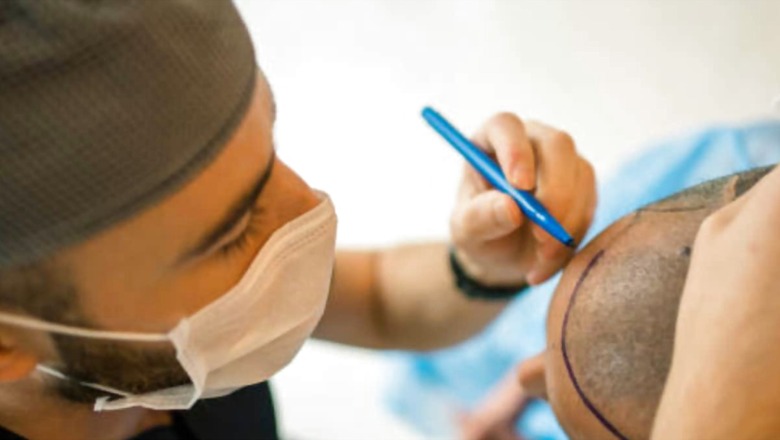
views
Advancements in technology have undoubtedly transformed the world around us. In the beauty industry, too, gone are the days of large, linear scar-forming hair transplant procedures. Modern techniques have made it a more viable and attractive option for individuals experiencing hair loss. With time, hair transplant procedures have gained popularity in India due to increased awareness and demand among both men and women. However, these beauty enhancements often come at a steep price that can prick a hole in your pocket.
As per a report by India Today, the cost of a hair transplant varies based on factors such as the clinic, the number of grafts needed, and the surgeon’s expertise. In Turkey, the average cost ranges from $1,500 to $3,500 (approximately Rs 1,24,000 to Rs 2,90,000), while the cost in India is also competitive, ranging from $1,000 to $3,000 (approximately Rs 83,000 to Rs 2,50,000) depending on similar factors.
Procedure
The hair transplant procedure involves moving hair follicles from a part of the body with dense hair, known as the donor area, to a bald or thinning, called the recipient area. There are two main methods of hair transplant: Follicular Unit Extraction (FUE) and Follicular Unit Transplantation (FUT). The procedure starts with local anaesthesia, followed by the extraction of hair, preparation of the recipient part, and implantation of the hair follicles. The transplanted hair typically falls out after a few weeks but starts regrowing fully in about a year.
Follicular Unit Transplantation involves removing a strip of scalp from the donor area, dissecting individual follicular units, and implanting them into the recipient area.
In Follicular Unit Extraction, individual follicles are extracted using a micro-punch directly from the donor area and then transplanted.
Aftercare
Patients might experience some discomfort post-surgery, like mild pain, swelling, and discomfort in the donor and recipient areas, which can be lowered with prescribed pain medications and proper aftercare. While hair transplants are generally safe, there are some risks, including infection, unnatural-looking hair growth, scarring, and folliculitis, to keep in mind.
Hence, surgeons instruct patients to keep the scalp clean, avoid direct sunlight, and avoid strenuous activities for a few weeks. It is also important to wash the hair as per the surgeon’s instructions and take the prescribed medication to prevent infection and reduce swelling.
Alternatives
Many people may be curious to know if this hair loss therapy hurts or not. Generally, the procedure lasts between 4 and 8 hours, depending on the person. Patients do not feel pain during the surgery, as the procedure is performed under local anaesthesia. If you do not want to go through a hair transplant treatment, you can also opt for non-surgical options like medication (minoxidil and finasteride) to slow hair loss and stimulate hair growth. Other alternatives are low-level laser therapy (LLLT), which uses light to promote hair growth, and scalp micro-pigmentation, which involves tattooing tiny dots on the scalp to create the illusion of fuller hair.
In addition to that, hairpieces, wigs, and hair extensions can also be a temporary solution to the hair loss problem. Platelet-rich plasma (PRP) therapy is another effective treatment where a person’s blood is used to promote hair growth.
However, it is important to know that each alternative has its benefits and limitations, and its effectiveness varies from person to person.



















Comments
0 comment